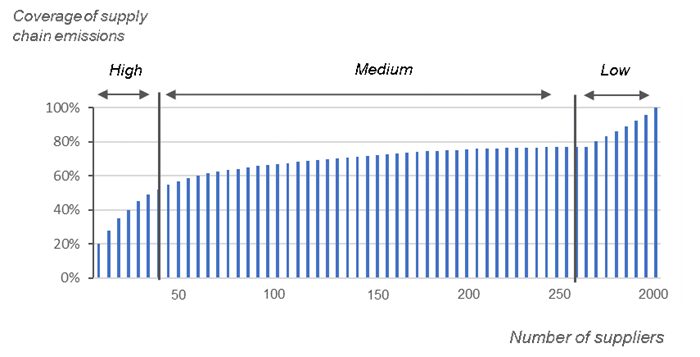- Sustainability
- Corporate Sustainability
- Supply Chain
Best Practices in Sustainable Supplier Engagement: Part 1

This blog was coauthored by Jeroen Scheepmaker and Caspar Noach.
More and more companies are setting ambitious sustainability targets for their supply chain. It strengthens the security of supply and it prepares a company for the upcoming low carbon economy—and both topics have high investor interest. Setting the ambition is a start but realizing the target is the challenge.
In this two-part blog series, Guidehouse, a Guidehouse company, will share best practices in sustainable supplier engagement. The best practices were distilled from a Guidehouse workshop in which sustainability and procurement professionals from various multinational companies participated.
Commitment Throughout the Organization Is the Foundation
Commitment from the board, the sustainability department, and the procurement department is essential to engaging with suppliers and discussing sustainability issues. Committing to a purpose (e.g., the Science Based Targets initiative) helps create buy-in throughout the organization.
Collaboration between the sustainability and procurement departments is indispensable for a successful supplier engagement program. Whereas the sustainability department typically has the most knowledge on sustainability and is responsible for target setting, the procurement department has all relevant relationships with suppliers. In practice, however, alignment between these departments is often suboptimal. Strategies to align procurement and sustainability include the following:
- Bring in different perspectives: Costs are often high on the agenda when discussing sustainability issues with the procurement department. To relieve the cost debate, bring brand people into the discussion. They are aware of brand risk and reputation and will give a different perspective on supplier engagement.
- Implement internal carbon pricing: Prices and costs are one of the most important elements in procurement decisions. Making the costs of greenhouse gas emissions an integral part of the decision-making process through implementing carbon prices can create the right incentive to reduce emissions.
- Create combined teams: Combine people from both the sustainability and the procurement department. This will help link departments for the longer term and will accelerate the integration of sustainability into procurement activities.
- Understand governance: Adjust organizational governance to facilitate sustainable supplier engagement. Key performance indicators for procurement should include sustainability indicators to bring sustainability topics higher on the agenda.
- Make success contagious: Give special attention to procurement people addressing sustainability in their procurement process. For example, introduce a yearly award for the procurement colleague with the highest sustainability scores.
Smart Pre-Selection of Suppliers Makes Supplier Engagement Manageable
Large companies often have thousands of suppliers from various sectors and countries, which is a major challenge in designing and implementing an effective and efficient supplier engagement program. The first step in designing a supplier engagement program is to reduce the number of suppliers. This can be done by focusing on suppliers that contribute to the largest part of the company’s carbon footprint. A relatively small number of suppliers is often responsible for the largest part of a company’s supply chain greenhouse gas emissions (see the figure below). Emissions can be reduced most efficiently if the focus is on these suppliers.
Cumulative Supplier Greenhouse Gas Emissions

(Source: Guidehouse)
In part 2 of this blog series, we will address the following best practices:
- Supplier engagement starts with open communication
- Long-term relationships and cocreation are effective ways to engage with suppliers
- Incentivize suppliers in a way that fits them and company interests